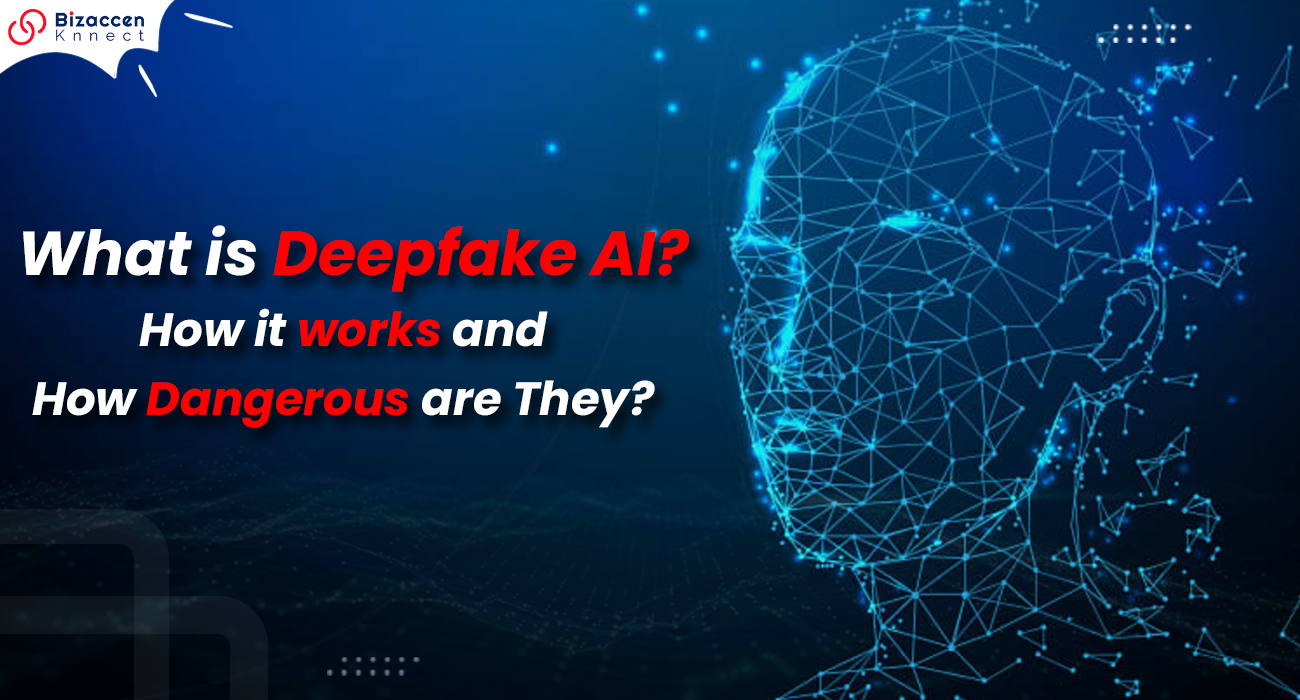
What is Deepfake AI? How it Works and How Dangerous Are They?
 Bizaccenknnect
Bizaccenknnect
Deepfake AI refers to a form of artificial intelligence that makes realistic fake images, audio, and video. It combines “deep learning” and “fake” to describe both the technology and the misleading content it produces. Deepfake can replace one person with another in existing content or generate entirely new content where people seem to do or say things they never did. The most significant risk of deep fakes lies in their potential to spread false information that seems true.
How do Deepfakes Work?
Deepfakes employ a pair of algorithms, comprising a generator and a discriminator, to produce and enhance fabricated content. The generator constructs a training dataset based on the desired output, initially generating fake digital content, while the discriminator evaluates the authenticity of the initial content. This iterative process enables the generator to become more proficient at creating realistic content, while the discriminator becomes more adept at detecting flaws for the generator to rectify.
The interplay between the generator and discriminator algorithms forms a generative adversarial network (GAN). GANs utilize deep learning to identify patterns in real images and then leverage these patterns to generate fake content. In the case of creating deepfake photos, a GAN system examines photographs of the target from multiple angles to capture all nuances and perspectives.
How are Deepfakes Commonly Used?
The applications of deepfakes encompass a wide range of purposes:
1. Entertainment: Deepfakes serve as a source of amusement in satire and parody, where viewers understand that the content isn’t real but still enjoy the humor it offers.
2. Caller Services & Customer Support: Some caller response services utilize deepfakes to provide personalized responses, particularly for call forwarding and receptionist functions. It is also used for customer phone support and fake voices. Deepfakes are also used for routine tasks like checking account balances or handling complaints.
3. Fraud and blackmailing: Deepfakes are exploited to impersonate individuals, often for the purpose of obtaining personal information like bank account and credit card details. Deepfakes are sometimes used for blackmail, reputation damage and cyber bullying.
4. Misinformation and Political Manipulation: Deepfake videos featuring politicians or trusted figures can be employed to influence public opinion, potentially swaying political discourse.
How are Deepfakes Dangerous?
Deepfakes, while mostly within the boundaries of the law, present substantial risks, which encompass the following:
1. The potential for blackmail and harm to one’s reputation, leading to legal complications for the victims.
2. The dissemination of political disinformation, with threat actors from nation states employing this technology for malicious objectives.
3. Interference in elections, such as the fabrication of counterfeit videos featuring candidates.
4. Manipulation of stock markets, involving the creation of counterfeit content aimed at affecting stock prices.
5. Instances of fraud wherein individuals are impersonated to steal financial accounts and other personally identifiable information (PII).
Conclusion
Many great leaders believe that AI, especially deepfake technology, is a big danger in the 21st century. It’s a real worry because it can be used for bad things like deception and manipulation. As AI gets better, we need to be careful and make sure it’s used in a good and safe way, and that rules are in place to keep it from causing harm in our world.

 Bizaccenknnect
Bizaccenknnect